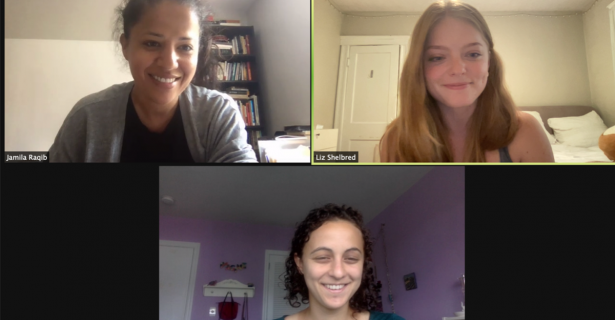It is not that I did not believe in the power and potential of nonviolent resistance before this summer. Through the wisdom of scholars like Mahatma Gandhi and Martin Luther King, Jr., I had previously learned about the theory behind nonviolent action, and through dozens of case studies on nonviolent movements, I could see that civil resistance works. But before working with Jamila Raqib and the Albert Einstein Institution, all of this felt abstract and only existed in far-off cases. In just the first month of my Oslo Scholars internship, I have already learned more about exactly how nonviolent movements start, develop, and succeed. And as the Albert Einstein Institution firmly believes, the answer to this all comes back to one central source: people.
Founded in 1983 by Dr. Gene Sharp, the Albert Einstein Institution aims to advance the study and use of strategic nonviolent action in order to defend democracy and freedom abroad. Today, Executive Director Jamila Raqib and her team are carrying on this mission while constantly thinking of how to adapt to the ever-evolving landscape of nonviolent movements and respond to conflict situations. In the last few weeks, I have had the privilege to work with Jamila and her team on important projects.
After familiarizing myself with the fundamental theory on nonviolent resistance behind the Albert Einstein Institution’s platform, by reading From Dictatorship to Democracy by Dr. Gene Sharp and watching How to Start a Revolution, I began to research some key questions and situations facing the field of nonviolent resistance today. After seeing the important role that social media is playing in movements such as those happening right now in Belarus and Hong Kong, I quickly became interested in the impact that digital technologies and social media has on nonviolent movements. I have already seen how drastically social media has changed the landscape of organizing and nonviolent action, and I hope to look further into how activists can and should adapt to a more digitized, globalized world.
Of course, asking one question prompted me to ask many others. While tracking nonviolent resistance in the news each week and attending webinars on the subject, I have begun to ask many other questions, including: How can critical pedagogy inform our approach to studying and learning nonviolent action? How can we elevate the voices of those faced with repression without putting them at risk? These questions are complex, and they certainly do not have simple, clear-cut answers; however, I look forward to investigating them this summer and beyond.
In learning about and applying the Institution’s people-powered approach to strategic nonviolent action, I have learned that it is critical to think outside of the box when finding solutions to conflict and division. I have also learned the importance of grounding research and action in the actual stories, values, and experiences of the people most directly affected by the repression that they face. The people on the ground fighting for freedom and power are the most capable of creating change in their own communities, and their knowledge and experiences must be the cornerstone from which people and institutions resolve conflict. Even in our daily lives, listening and learning from others can be the first step to making sustainable change.
As Dr. Gene Sharp writes in From Dictatorship to Democracy, “Liberation from dictatorships ultimately depends on the people’s ability to liberate themselves.” Although I felt somewhat helpless when I first became interested in the field of human rights — and oftentimes I still do — my time with the Albert Einstein Institution thus far has shown me that even those with seemingly the least amount of power and capital have the capacity to create change.
Photo caption: Jamila Raqib, Claire Trilling, and Liz Shelbred check-in virtually.

